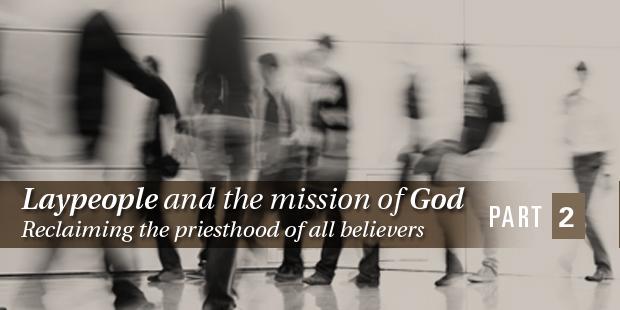
The Danger of Outranking Your Team
I was enjoying a meal with a well-known Christian leader a few weeks ago. He is a brilliant man who leads a large team of great people. We were discussing a particularly entrenched dynamic on his team that he didn’t understand and didn’t like. It seemed every time he wanted the team to wrestle with a difficult challenge their organization was facing, the team would always haltingly poke around for the “right answer”–the solution that the team believed their leader had already thought of. To them, it wasn’t a discussion so much as a test to see if they could or would come up with the same answer the leader had already decided on.
Only, this really wasn’t the leader’s intent. He really did want them to wrestle together to find solutions to creative challenges, and he really didn’t already have an answer in mind. But no matter how often he would say that, the team didn’t seem to believe him. They would keep trying to uncover the “right answer” as he saw it rather than offering their own unvarnished opinions and ideas. All of this was doubly frustrating because this happened to be a team full of creative powerhouses!
So what was really going on here?
It’s difficult to unravel dynamics like this without first understanding the notion of “rank” on a team. Rank is a way of describing a person’s level of authority on the team within a particular arena. Every member of a team has some form of rank. The kind of rank we’re most familiar with is positional rank. The leader in this story, for example, is the boss over everyone on his team. So he has the highest positional rank.
But there are many other kinds of rank that exist on a team, and these often carry more weight than positional rank. For example:
- intellectual rank (who’s the one that the team holds as the smartest among them?),
- emotional rank (which team member’s emotional state matters most to the team?),
- spiritual rank (who is seen as the wisest spiritually?),
- social rank (who is the one who holds the group together as a relational community?)
…and so on.
There are as many types of rank as there are arenas of authority. Having a particular kind of rank in a team is not the same thing as playing a particular role; in fact, sometimes there can seem to be little connection between a person’s rank and their role on the team. The person taking the notes (a role) may be the one with the greatest emotional rank on the team (i.e. when he’s happy, everyone’s happy; when he’s upset, the group stops everything to “make it better” for him). Or the person with the lowest paid job may have the highest social rank (i.e. she’s the one who has the power to either include or exclude anyone on the team from the social community within the team or the organization).
So back to this leader’s story. His problem was that he was carrying too much rank in too many arenas within the team, and that was effectively shutting down the team’s capacity to function creatively. Besides having positional rank on the team, he also had the highest intellectual rank, and the highest emotional rank. He was the boss. He was seen as smarter than anyone else in the room. And everyone on the team was bent on keeping him emotionally happy. No wonder the team couldn’t have open creative discussions!
Now that he knows about his rank (most people are unaware of the rank they hold within a team), he is able to intentionally “give it away” it to others on the team. For example, he’s shifting the organizational structure so that others on the team have more positional authority. He’s also begun to consciously defer to the team’s collective intelligence in many key decisions as a way of transferring his own intellectual rank to others on the team. Finally, he’s learning to better manage his emotions to avoid inadvertently hijacking the team’s creative process when he feels frustrated or sad.
What about your team (or teams)? How do you notice “rank” impacting your team?
Read more from Michael here.

Tags: Michael Warden, Staff, Staff Leadership Roles, Team



























